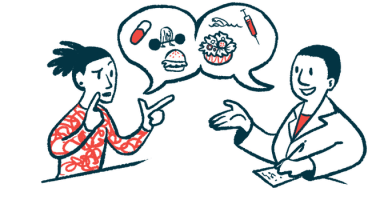Most AAV patients have fatigue severe enough to be a disorder
Study assessed fatigue severity against people with fibromyalgia

Many people with ANCA-associated vasculitis (AAV) have profound fatigue that’s severe enough to fulfill the diagnostic criteria for chronic fatigue syndrome, even when the disease isn’t active, a study shows.
“We emphasize that physicians should be aware of this when assessing treatment and management strategies for improving quality of life in AAV patients, the researchers wrote.
Fatigue in AAV may vary based on the presence of different disease-driving antibodies, according to the study, “Myalgic encephalomyelitis/chronic fatigue syndrome (ME/CFS) and fibromyalgia: PR3-versus MPO-ANCA-associated vasculitis, an exploratory cross-sectional study,” which was published in The Lancet Regional Health – Americas.
AAV is an autoimmune disease caused by anti-neutrophil cytoplasmic autoantibodies, or ANCAs, that drive an attack against certain immune cells, leading to damage to blood vessels. The two most common types of ANCAs target proteinase 3 (PR3) or myeloperoxidase (MPO) proteins.
Fatigue is a common symptom of AAV and other autoimmune diseases, and it can have a profound impact on patients’ quality of life. It’s the defining symptom of chronic fatigue syndrome (CFS), a disorder that presents extreme, ongoing fatigue. It’s a common symptom of fibromyalgia, which is marked by chronic widespread pain. The cause is unclear in both disorders.
Rates of fatigue in people with ANCA-associated vasculitis
Researchers at the University of Alberta, Canada assessed fatigue severity in 52 AAV patients with inactive disease, 30 with fibromyalgia, and 30 healthy people, who served as controls.
Half the AAV patients had ANCAs against PR3, while the other half were positive for MPO-targeting antibodies. Joint pain and kidney involvement were more common among those with PR3-AAV.
Compared with the other two groups, AAV patients were older (53.3 vs. about 44), fewer were women (57.6% vs. 66.7-100%), or were employed (52% vs. 72.4-78.5%), mainly due to retirement.
Results showed 27 AAV patients (51.9%) met the diagnostic criteria for CFS. Ten of those met the diagnostic criteria for fibromyalgia.
“We believe this to be the first manuscript investigating the presence of both [CFS] and fibromyalgia in AAV patients,” the researchers wrote, adding that while all the patients had inactive disease, they observed more than half fulfilled “the diagnostic criteria for [CFS], and that a third of those patients suffered from fibromyalgia.”
“These debilitating symptoms, seemingly unassociated with disease activity itself, requires desperate attention,” the scientists wrote.
All 30 fibromyalgia patients also met CFS criteria, while none of the controls met the criteria for either CFS or fibromyalgia.
AAV patients with CFS had significantly more accrued organ damage, as assessed with the vasculitis damage index, and significantly more eye involvement than those without it.
They also had similar rates of cognitive issues, sleep disturbances, and anxiety than fibromyalgia patients, with most in both groups having these issues, analyses showed.
These problems were significantly less common among healthy controls and AAV patients who didn’t qualify for a CFS diagnosis.
Patients with MPO-AAV were more likely to have CFS than those with PR3-AAV (61.5% vs. 42.3%), but this difference failed to reach statistical significance. In both groups, fatigued patients had significantly lower quality of life.
MPO-AAV patients with CFS had similar rates of anxiety, depression, and sleep disturbances relative to fibromyalgia patients. These issues were significantly less common among PR3-AAV patients with CFS.
“The MPO-ANCA [type] displayed appreciably higher rates of fatigue,” the researchers wrote, adding that “when we compared PR3- and MPO-ANCA fatigued patients, MPO-AAV-CFS patients had more similarities with fibromyalgia patients than PR3-AAV-CFS.”
These findings could mean that “the underlying mechanisms behind patient-reported fatigue may differ by [antibody type] in AAV,” the researchers wrote. “Understanding the differences behind the development of fatigue between the two [antibody types] will not only help inform future clinical trials and treatment strategies in AAV, but may … potentially lead to the development of [antibody type] specific biomarkers that can be utilized in clinical trials for these patients.”
The scientists emphasized that their study was limited by its small size and called for more research to validate and expand on their results.






